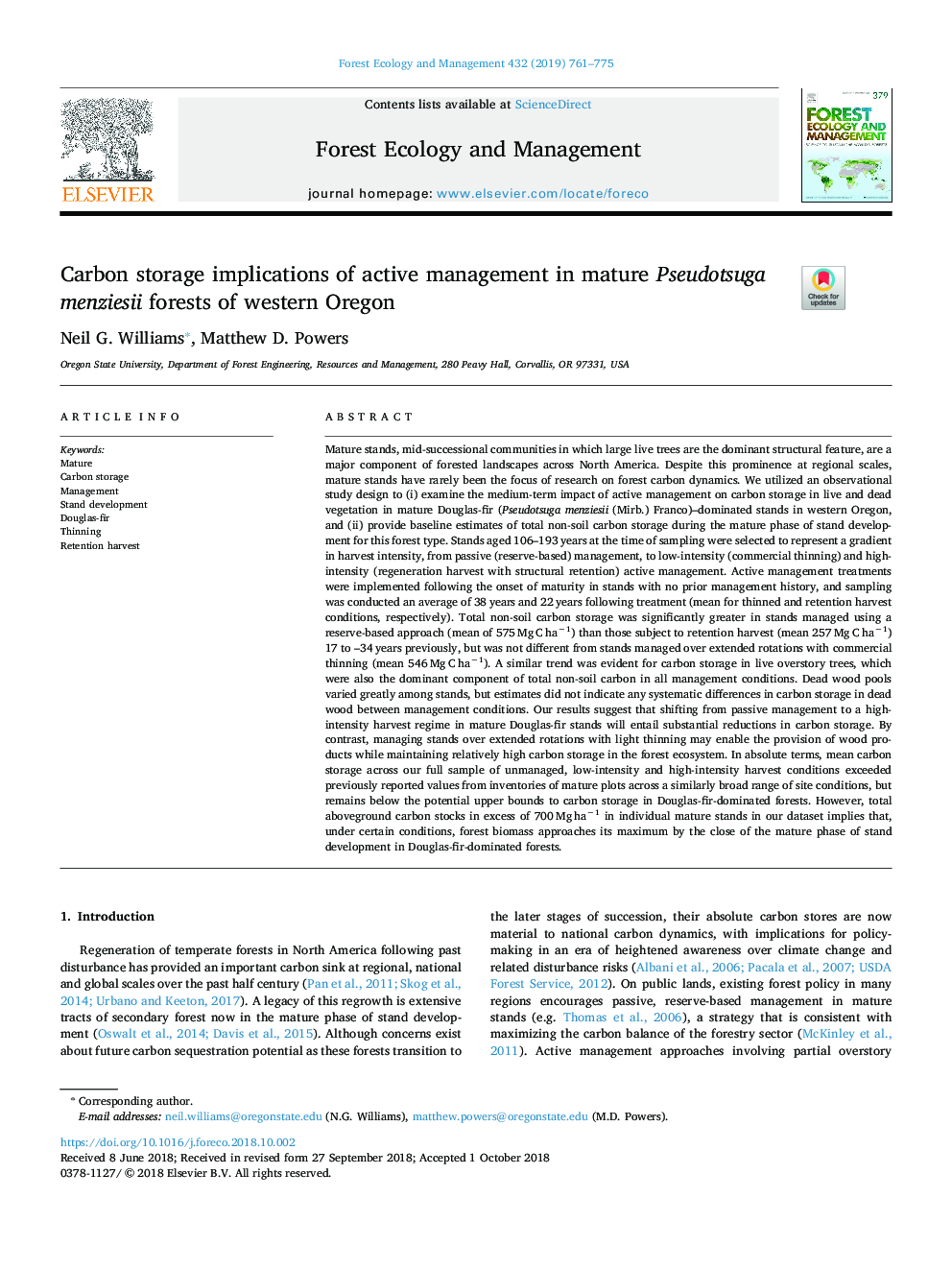| کد مقاله | کد نشریه | سال انتشار | مقاله انگلیسی | نسخه تمام متن |
|---|---|---|---|---|
| 11028416 | 1662523 | 2019 | 15 صفحه PDF | دانلود رایگان |
عنوان انگلیسی مقاله ISI
Carbon storage implications of active management in mature Pseudotsuga menziesii forests of western Oregon
دانلود مقاله + سفارش ترجمه
دانلود مقاله ISI انگلیسی
رایگان برای ایرانیان
کلمات کلیدی
موضوعات مرتبط
علوم زیستی و بیوفناوری
علوم کشاورزی و بیولوژیک
بوم شناسی، تکامل، رفتار و سامانه شناسی
پیش نمایش صفحه اول مقاله

چکیده انگلیسی
Mature stands, mid-successional communities in which large live trees are the dominant structural feature, are a major component of forested landscapes across North America. Despite this prominence at regional scales, mature stands have rarely been the focus of research on forest carbon dynamics. We utilized an observational study design to (i) examine the medium-term impact of active management on carbon storage in live and dead vegetation in mature Douglas-fir (Pseudotsuga menziesii (Mirb.) Franco)-dominated stands in western Oregon, and (ii) provide baseline estimates of total non-soil carbon storage during the mature phase of stand development for this forest type. Stands aged 106-193â¯years at the time of sampling were selected to represent a gradient in harvest intensity, from passive (reserve-based) management, to low-intensity (commercial thinning) and high-intensity (regeneration harvest with structural retention) active management. Active management treatments were implemented following the onset of maturity in stands with no prior management history, and sampling was conducted an average of 38â¯years and 22â¯years following treatment (mean for thinned and retention harvest conditions, respectively). Total non-soil carbon storage was significantly greater in stands managed using a reserve-based approach (mean of 575â¯Mgâ¯Câ¯haâ1) than those subject to retention harvest (mean 257â¯Mgâ¯Câ¯haâ1) 17 to -34â¯years previously, but was not different from stands managed over extended rotations with commercial thinning (mean 546â¯Mgâ¯Câ¯haâ1). A similar trend was evident for carbon storage in live overstory trees, which were also the dominant component of total non-soil carbon in all management conditions. Dead wood pools varied greatly among stands, but estimates did not indicate any systematic differences in carbon storage in dead wood between management conditions. Our results suggest that shifting from passive management to a high-intensity harvest regime in mature Douglas-fir stands will entail substantial reductions in carbon storage. By contrast, managing stands over extended rotations with light thinning may enable the provision of wood products while maintaining relatively high carbon storage in the forest ecosystem. In absolute terms, mean carbon storage across our full sample of unmanaged, low-intensity and high-intensity harvest conditions exceeded previously reported values from inventories of mature plots across a similarly broad range of site conditions, but remains below the potential upper bounds to carbon storage in Douglas-fir-dominated forests. However, total aboveground carbon stocks in excess of 700â¯Mgâ¯haâ1 in individual mature stands in our dataset implies that, under certain conditions, forest biomass approaches its maximum by the close of the mature phase of stand development in Douglas-fir-dominated forests.
ناشر
Database: Elsevier - ScienceDirect (ساینس دایرکت)
Journal: Forest Ecology and Management - Volume 432, 15 January 2019, Pages 761-775
Journal: Forest Ecology and Management - Volume 432, 15 January 2019, Pages 761-775
نویسندگان
Neil G. Williams, Matthew D. Powers,